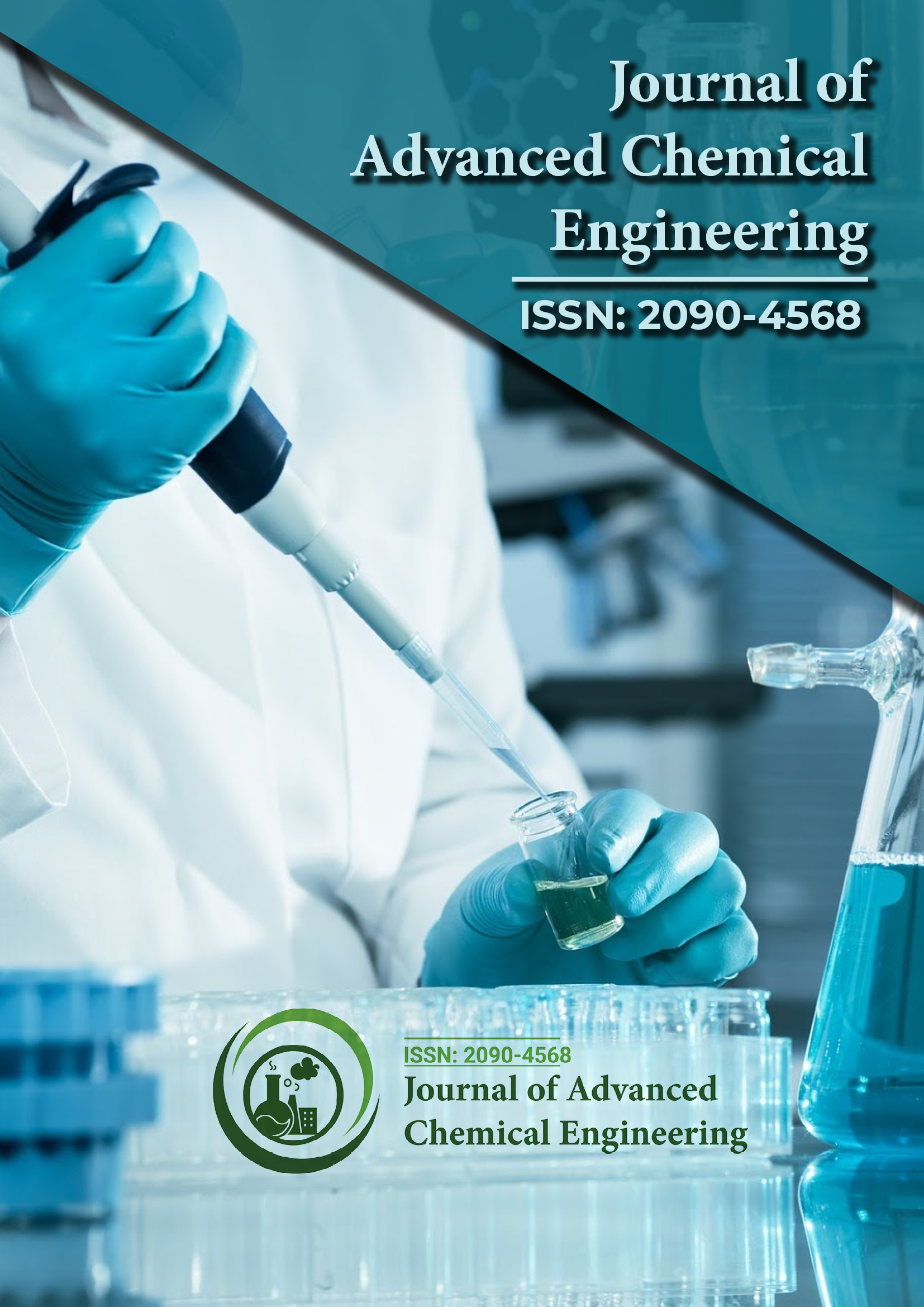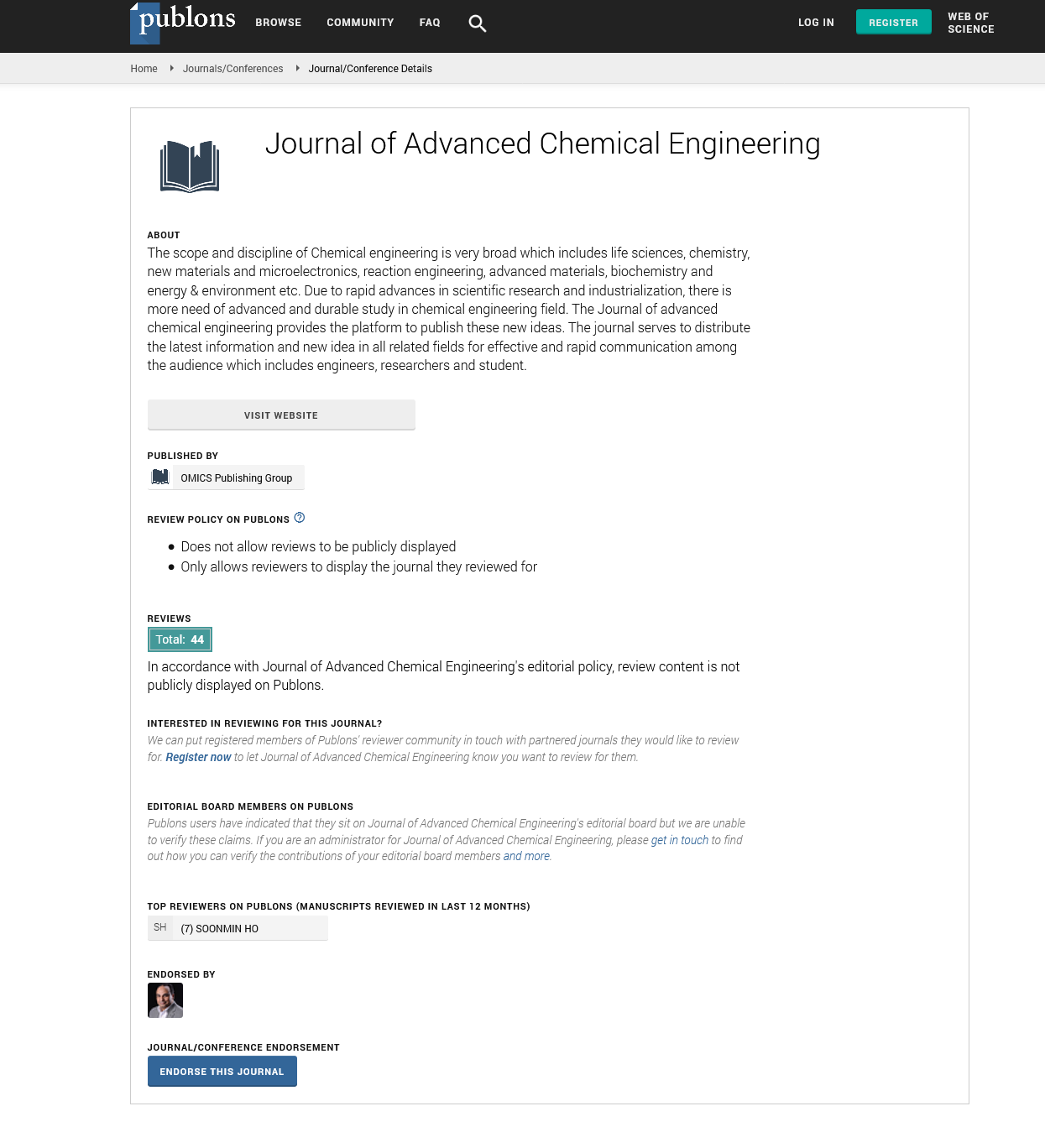Indexed In
- Open J Gate
- Genamics JournalSeek
- Smithers Rapra
- RefSeek
- Directory of Research Journal Indexing (DRJI)
- Hamdard University
- EBSCO A-Z
- OCLC- WorldCat
- Scholarsteer
- Publons
- Geneva Foundation for Medical Education and Research
- Google Scholar
Useful Links
Share This Page
Journal Flyer

Open Access Journals
- Agri and Aquaculture
- Biochemistry
- Bioinformatics & Systems Biology
- Business & Management
- Chemistry
- Clinical Sciences
- Engineering
- Food & Nutrition
- General Science
- Genetics & Molecular Biology
- Immunology & Microbiology
- Medical Sciences
- Neuroscience & Psychology
- Nursing & Health Care
- Pharmaceutical Sciences
Perspective - (2024) Volume 14, Issue 2
Optimizing Medicinal Chemistry with Photoredox Cross-Coupling Innovations
Elena Varghese*Received: 20-May-2024, Manuscript No. ACE-24-26654; Editor assigned: 22-May-2024, Pre QC No. ACE-24-26654 (PQ); Reviewed: 05-Jun-2024, QC No. ACE-24-26654; Revised: 12-Jun-2024, Manuscript No. ACE-24-26654 (R); Published: 19-Jun-2024, DOI: 10.35248/2090-4568.24.14.340
Description
Photoredox chemistry, leveraging the power of light to drive chemical reactions, has seen transformative advances in recent years. Central to this evolution is the development and application of photoredox cross-coupling reactions, which have become instrumental in medicinal chemistry research.
The basics of photoredox cross-coupling reactions
Photoredox cross-coupling reactions utilize light to activate a photocatalyst, which then mediates the formation of new carbon-carbon (C-C) bonds. Unlike traditional cross-coupling methods, which typically rely on high temperatures and expensive reagents, photoredox reactions operate under milder conditions. This shift is largely due to the use of photocatalysts- often organic dyes or transition metal complexes-that absorb light and facilitate electron transfer processes.
Excitation: The photocatalyst absorbs visible light, becoming an excited state that possesses higher energy.
Electron transfer: The excited photocatalyst transfers an electron to a substrate, generating a reactive radical or anion.
Bond formation: The reactive intermediates then couple with another substrate to form the desired product.
Advantages in medicinal chemistry
The integration of photoredox cross-coupling reactions into medicinal chemistry offers several significant benefits.
Milder reaction conditions: Traditional cross-coupling reactions often require high temperatures and pressures, which can be challenging when dealing with sensitive or complex molecules. Photoredox reactions, on the other hand, typically proceed at room temperature and under atmospheric pressure, minimizing the risk of decomposition or unwanted side reactions.
Increased reaction scope: Photoredox chemistry expands the range of feasible reactions. For example, it can facilitate the coupling of substrates that are challenging to combine using conventional methods. This enhanced scope is particularly valuable in medicinal chemistry, where the diversity of compounds is essential.
Improved selectivity: The ability to control the reaction conditions more precisely allows for better selectivity in product formation. This precision is advantageous when synthesizing complex molecules, where the risk of forming by-products can be high.
Application in medicinal chemistry
The practical application of photoredox cross-coupling reactions in medicinal chemistry is evident in various drug discovery and development processes.
Drug metabolite synthesis: Photoredox reactions facilitate the synthesis of drug metabolites, which are essential for studying the metabolism and pharmacokinetics of new drugs. This ability allows for more efficient and targeted development of pharmaceuticals.
Structure-activity relationship studies: Understanding how different chemical modifications affect a drug’s biological activity is key to optimizing its efficacy. Photoredox cross-coupling reactions enable the rapid and efficient generation of chemical libraries, which can be used to probe structure-activity relationships (SAR) in drug discovery.
Targeted chemical synthesis: In the synthesis of complex molecules, such as natural products or small molecules with specific biological activity, photoredox reactions offer a versatile tool. They allow chemists to construct intricate structures with high precision, aiding in the development of novel therapeutic agents.
Functional group transformations: The ability to selectively modify functional groups within a molecule is critical in medicinal chemistry. Photoredox cross-coupling reactions provide a means to achieve such transformations with minimal side reactions, thus facilitating the fine-tuning of drug candidates.
Challenges and future directions
Despite the advantages, there are challenges associated with the systematic implementation of photoredox cross-coupling reactions. One major challenge is the scalability of these reactions. While they work well in small-scale laboratory settings, scaling up to industrial production requires careful optimization of reaction conditions and photocatalyst performance.
Additionally, the development of new photocatalysts with improved activity and selectivity remains an area of active research. Advances in materials science and photocatalyst design will likely enhance the efficiency and scope of photoredox reactions.
Future research is also focused on expanding the types of substrates and reactions that can be successfully coupled using photoredox methods. This includes exploring new areas of medicinal chemistry where these reactions could provide significant benefits.
Citation: Varghese E (2024) Optimizing Medicinal Chemistry with Photoredox Cross-Coupling Innovations. Adv Chem Eng. 14.340.
Copyright: © 2024 Varghese E. This is an open-access article distributed under the terms of the Creative Commons Attribution License, which permits unrestricted use, distribution, and reproduction in any medium, provided the original author and source are credited.

